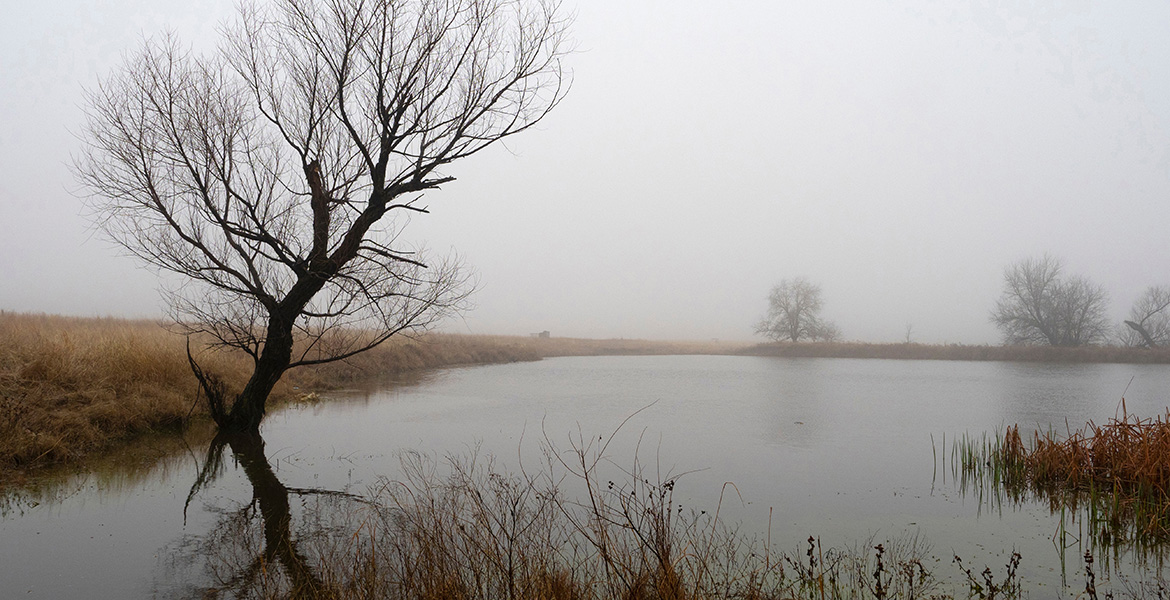
Unseasonal blue-green algae bloom warrants producer vigilance
Wednesday, March 18, 2020
Livestock producers should examine their farm ponds after seven cows died as a result of unseasonal blue-green algae consumption in Payne County, said an Oklahoma State University Extension agricultural educator.
“It’s not something seen very often this time of year, but awareness about environmental conditions that can potentially affect the well-being of cattle and other livestock is something we stress,” said Nathan Anderson, Payne County Extension director and agricultural educator.
Historically, summer and early fall months in Oklahoma are much more likely times for blue-green algae blooms than March. Blue-green algae, also known as cyanobacteria, are microscopic organisms that live in water. The algae are usually too small to be seen, but sometimes can form visible algae blooms.
“Blooms can form in warm, slow-moving waters that are rich in nutrients, such as might be seen in runoff from livestock holding areas or manure storage piles,” said Marley Beem, OSU Extension aquaculture specialist with the university’s Department of Natural Resource Ecology and Management.
Blue-green algae can produce toxins such as anatoxin and microcystins that can cause illness in people and animals. As cyanobacteria die, they float to the surface. When concentrated, the blue-green algae may appear as scum on or just below the water’s surface.
“Fortunately, it’s rained over the last few days,” Anderson said. “Rain will help reduce the toxicity level if blue-green algae are present. However, given what happened in Payne County, good management practices suggest producers should keep an eye out for surface scums that might indicate a potential hazard.”
Affected livestock may show signs of muscle tremors, decreased movement and difficult breathing. They may collapse and go into convulsions.
“In the field, some cases show no signs except sudden collapse and death,” said Dr. Barry Whitworth, OSU Extension veterinarian and food animal quality and health specialist. “If a producer suspects a farm pond contains toxic blue-green algae, he or she should take steps to ensure people, pets and livestock stay away from the water source, as all can be affected by the toxins.”
Beem recommended producers err on the side of caution and not necessarily wait for signs of animal distress.
“If in doubt, fence them out,” he said.
Longstanding OSU Extension recommendations are for producers to contact their local veterinarian immediately if the presence of blue-green algae is suspected.
“Local veterinarians know the appropriate health protocols and in a case of animal death will work with the Oklahoma Animal Disease Diagnostic Laboratory at OSU to verify the cause,” Whitworth said. “Producers also should work with their local OSU Extension agricultural educator, who can visit the operation and provide specific management solutions.”
OSU Extension is one of two state agencies administered by the university’s Division of Agricultural Sciences and Natural Resources, and is a key part of OSU’s state and federally mandated teaching, research and Extension land-grant mission.
MEDIA CONTACT: Donald Stotts | Agricultural Communications Services | 405-744-4079 | donald.stotts@okstate.edu
